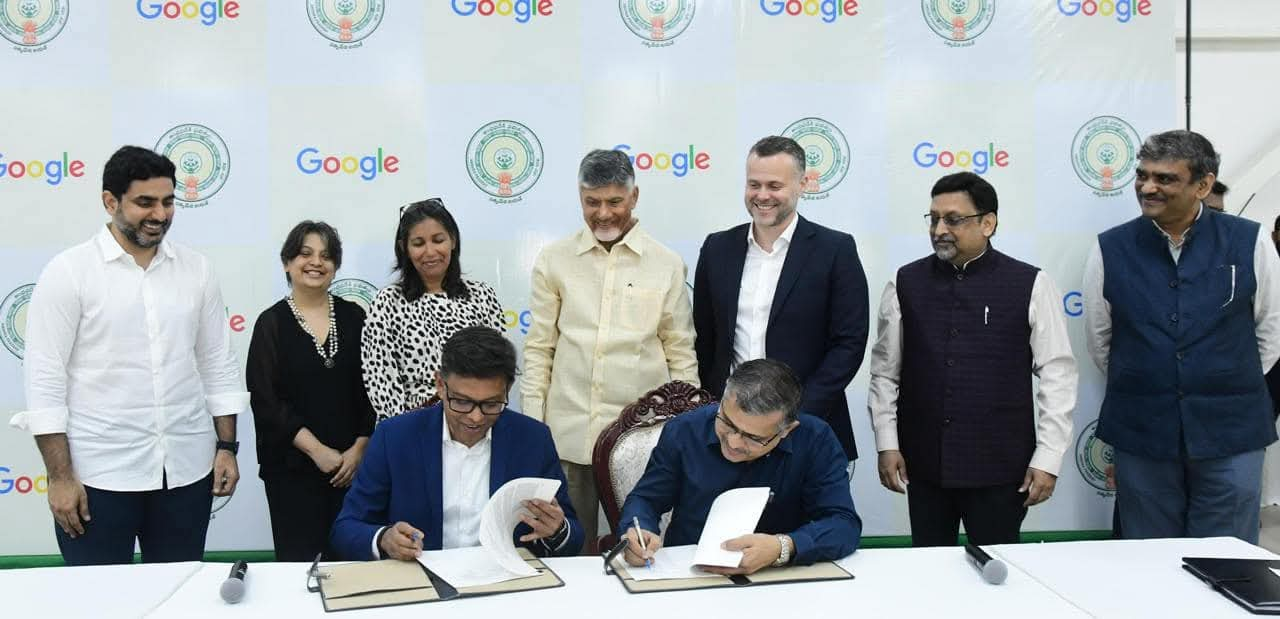Photo Credit: Internet
Clear Cut Review Desk
New Delhi, UPDATED: Oct 22, 2025 02:52 IST
Written By: Janmojaya Barik
On October 14, 2025, a low-key but momentous event took place on India’s eastern shore. In Visakhapatnam, the Andhra Pradesh government signed a memorandum of understanding with Google to build what will be the country’s first dedicated artificial intelligence hub. The scale of the project is immense. Google will invest about 15 billion dollars to establish a one-gigawatt hyperscale data centre campus that will anchor India’s AI infrastructure for the coming decade. The deal also guarantees an estimated 180,000 direct and indirect positions, Reuters and government reports say.
Aside from the figures, the move heralds a new era in India’s engagement with international tech giants. For years, India was a consumer of digital innovation that is developed elsewhere. It is now positioning itself as a co-designer of that innovation. The Visakhapatnam venture is Google’s biggest investment outside the US. It will comprise a network of local alliances, such as AdaniConneX for infrastructure and Bharti Airtel for connectivity, forming an ecosystem that has the potential to change the way data, power, and intelligence merge in the subcontinent.
Infrastructure that Connects and Empowers
The agreement was signed at a function where the representatives of the Ministry of Electronics and Information Technology, NITI Aayog, and Google’s worldwide team headed by Sundar Pichai were present. The physical work on the project is anticipated to start in early 2026, and the full operating capacity is envisioned for 2030. Part of the scheme is building a new subsea cable landing facility in Visakhapatnam, fortifying India’s global digital connections. This facility will be utilized for AI training, cloud processing, and language models attuned specifically to the Indian market.
But the bigger question is not that of concrete and cable. It is one of control. Who will own the data flowing through this infrastructure? The Digital India strategy of the government is to see India as a powerhouse of data, but technology stack is dominated by international players such as Google. The AI hub can give strength to India if policymaking guarantees local research centers, startups, and universities access to the facilities and pools of data the project will create. Otherwise, the center could end up being another raw data and talent export corridor without creating authentic domestic capacity.
Balancing Growth with Sustainability
The Andhra Pradesh government has vowed a green corridor of power supply to fuel the facility using renewables. That pledge is important because data centers are among the biggest electricity consumers. A one-gigawatt operation would be equivalent to lighting up a mid-sized Indian city. Google has said it will make the Visakhapatnam hub achieve its global 2030 vision of operating with net-zero emissions for its data operations. This convergence of digital expansion and sustainability will be one of the first tests of India’s ability to coordinate technological growth without environmental compromise.
Closing the Skills Gap
What also shines through is the project’s focus on skill development. The MoU entails plans to set up a joint research program between Google and Indian Institutes of Technology in Hyderabad and Kharagpur. It seeks to train more than 250,000 professionals in AI and cloud technologies in the next five years. It is a strategic move to tackle one of India’s largest challenges — the skill gap in emerging technologies. Based on the Nasscom AI Report 2024, India’s engineering graduates possess AI or data science skills that are not job-ready in less than 30 percent of cases. By leveraging this partnership effectively, it can fill this gap and equip India’s workforce to take advantage of the digital economy.
India Between Two Giants
That being said, one must not discount the geopolitical landscape. As America and China battle for AI superiority, India is being wooed as a secure alternative base. Google’s choice to base a project of such magnitude in India is both opportunity and risk diversification. It also resonates with India’s aspirations to be a world leader in AI innovation under the Digital India and Make in India programs. The government’s IndiaAI Mission announced earlier this year deals with responsible AI governance, linguistic diversity, and access for all. The Visakhapatnam center can be the physical underpinning of that vision.
The Real Test Ahead

Google officials with N. Chandrababu Naidu (Chief Minister, Andhra Pradesh) and his team | Photo Credit: Internet
However, one must be cautious with such optimism. Technology plans in India tend to fail not due to absence of intent but poor implementation. Delays in infrastructure, uncertainty of policy, and data protection issues may take their toll on the pace of progress. The success of this hub will rely on whether Google and the government deal with issues such as data privacy, AI bias, and reasonable access in a transparent manner. A project of this scale cannot operate in a vacuum. It must work in tandem with robust regulatory oversight.
If things go according to plan, the Visakhapatnam hub may well become the center of India’s AI ecosystem, being a proving ground for in-house innovation as well as deepening India’s integration into global digital networks. It is an expression of an India that no longer merely imports technology but welcomes its making. The actual test will not be in the ribbon-cutting or in investment levels but in whether the hub enables local entrepreneurs, enhances research, and maintains digital ethics.
As the sun sets over the Bay of Bengal, Visakhapatnam readies itself for sunrise of a different sort. The waves that once bore freight and coal will soon bear data and ideas. What India makes of it will determine not just its technological future, but its moral one.




